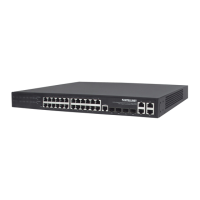PORT ISOLATION
The port isolation function allows you to congure your Intellinet Network Solutions switch to prevent PCs
on dierent ports from communicating with each other without conguring a VLAN.
Item Description
Source Port Select the port you wish to isolate.
Isolation Port Select the port(s) to which packets from the source port can be forwarded. More than
one port can be selected here.
VLAN
A virtual LAN (VLAN) is any broadcast domain that is partitioned and isolated in a computer network at
the datalink layer (OSI layer 2). VLANs are datalink layer (OSI layer 2) constructs, analogous to IP subnets,
which are network-layer (OSI layer 3) constructs. VLANs can be used to partition a local network into several
distinctive segments.
VLAN technology provides the following advantages:
1. Broadcast trac does not cross into dierent VLANs, which reduces bandwidth utilization and
improves network performance.
2. Security in your LAN can be improved, since packets in dierent VLANs cannot communicate with each
other directly.
3. With VLAN, clients can be allocated to dierent working groups, and users from the same group do not
have to be within the same physical area, which makes network maintenance much easier and more
exible.
VLAN technology knows three types of ports — access, trunk and hybrid ports.
1. Access Ports (untagged)
a. Access ports are designed to tag any incoming packet with the VLAN ID the port has been
assigned to.

